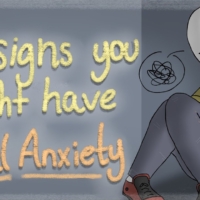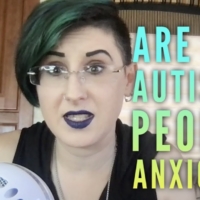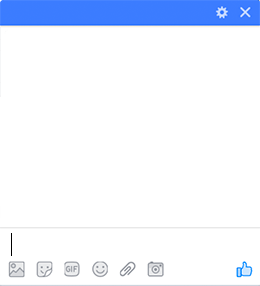Autism Spectrum: Atypical Minds in a Stereotypical World
When we examine 100 random teenagers, we would
find that while they all look different, their minds work in very similar ways. 1 to 2 however, have minds that are atypical
in a particular way. They could be diagnosed with autism. This happens to boys four times as much, perhaps
because diagnosing them is easier. Children – and adults – who are on the autism
spectrum experience the world differently because they were born with various degrees
of neurodivergent traits. Most autistic children have more refined senses
and share a deep desire to bring logic into their surroundings. Some seek repetitive behaviors that follow
specific patterns and many appear to be asocial and avoid eye contact. Autism is not a disease and therefore can
not be cured. Since all our brains are different and there
is an endless range of nuances in their architecture, autism is defined as a spectrum.
On one side of the spectrum is the mildest
form of autism, in the past often also referred to as Aspergers. These children are highly intelligent and
have extreme abilities and strong interests in specific areas. In the middle are those with average intelligence
and some problems learning new things. On the far end of the spectrum are children
with severe learning disabilities. Children on the spectrum may require various
degrees of support in their daily lives. Timo, a young boy, can help us understand
how living with a neurodivergent mind can be. His mum noticed early on that her boy would
avoid eye contact and that he would often become upset if she hugged him. He never returned smiles and engaging him
in play with friends often ended in a tantrum. His mother suspected something to be wrong
when Timo still wasn’t speaking more than two or three words at a time even after turning
four years old. She sought help and Timo was diagnosed with
a mild form of autism spectrum disorder, or ASD for short.
Timo has an atypical perception. When reading books or watching movies, Timo’s
brain picks up and organizes information differently. While his neurotypical peers categorize things
and form schemas – for example, they identify everything with four legs that bark like a
dog. For Timo, each type of dog is unique and categorized
in Timo’s mind individually. His attention to detail and difficulty when
generalizing makes Timo more objective in his perception of the world and less prone
to a framing bias. However, it also makes all sorts of new experiences
incredibly complex, which is why he loves to follow a rigid daily routine to limit his
sensory input.
Timo is highly sensitive. His brain amplifies whatever input it receives
— he hears everything and has a heightened sense of touch. However, this superpower makes situations
where many people speak simultaneously very challenging — Timo hears everyone but understands
nothing. The sensitivity to touch makes eating an intense
experience. If a texture or flavor is too much to handle,
Timo won’t eat it. Also walking barefoot on wet grass or playing
in the dirt overwhelms his brain.

He has a fascination with logic. Timo naturally looks for patterns that bring
logic into this world. Sometimes he would also try to bring order
into his behavior and ways of moving his body. When he experiences structured patterns breaking,
he gets upset. It freaks him out when someone counts to 8
but doesn’t continue to 10. Doctors call it an obsessive-compulsive disorder
or OCD, which is a different diagnosis but often goes along with autism. Timo experiences social disconnection. He has trouble connecting with others because
social settings overwhelm his sensitivity and desire for order. Because human emotions are incredibly complex
and don’t follow a set of predictable patterns, Timo often finds himself misreading situations
and upsetting people around him. As a consequence, he avoids people and rarely
makes eye contact. Which doesn’t matter that much to him, since
most of the things other people talk about are illogical, irrelevant, and boring anyways. For 4 years, his mother had him be treated
by a therapist who would show him images of faces to help him learn to identify feelings.
ChatGPT Copywriting: Skyrocket Your Sales, Boost Your Conversion Rates & Dominate Your Competition
Turn Your Brainstorms Into Sales Storms with Our Script-Transforming App!
Skyrocket Your Sales, Boost Your Conversion Rates & Dominate Your Competition By Unleashing the Power of AI-Amplified Persuasive Sales Scripts done by ChatGPT
The Only App That Transforms ChatGPT Into a World-Class Copywriter Through Frameworks & Expert AI Seeds.
Watch the demo here [https://jvz1.com/c/335985/391150/] $37.⁰⁰
Here is what you get:
+ World’s #1 ChatGPT Copywriting App
+ ChatGPT Connect Chrome Plugin
+ 210 AI Frameworks and Seeds
+ Make Your Sales Scripts Sizzle
+ Transform ChatGPT into a World-Class Copywriter
+ Unlimited Usage Rights with AI
+ Unlimited Usage Rights with AI For Clients
+ Access From Anywhere
+ Step-By-Step Training
+ Fast & Friendly Support
+ Free Updates
+ Commercial License

PLUS you get bonuses valued at 2,579 on top – a mind-blowing deal.
Transform ChatGPT into a Master Copywriter!
Check it out here! $37.⁰⁰
[Have a great day,
яαℓρн ℓєαмαи]

facial expressions and their corresponding emotions. However, he is still not very interested
in reading faces or establishing new social contacts. He has two friends who share the same interests
and couldn’t wish for more. Since Timo’s autism is not an illness we
can treat, but rather a different way of him experiencing the world, the question remains
whether we should try to change him through therapy or accept him for who he is.
So what do you think? Should we treat children with autism with
therapy or celebrate them for who they are? Or perhaps do both? Maybe it’s not their atypical minds, but
our stereotypical way of looking at them that needs correction. To get a 3-dimensional glimpse of how an autistic
girl experiences her surprise birthday party, or to download this video without background
music, check the descriptions below or visit sproutsschools.com.
What is Trade Command Center? Trade Command Center is an innovative software solution that empowers traders with daily forex signals. Designed with user-friendliness in mind, this versatile program can be accessed from both mobile devices and desktops, allowing traders to stay connected to the markets and make informed trades no matter where they are. 




















